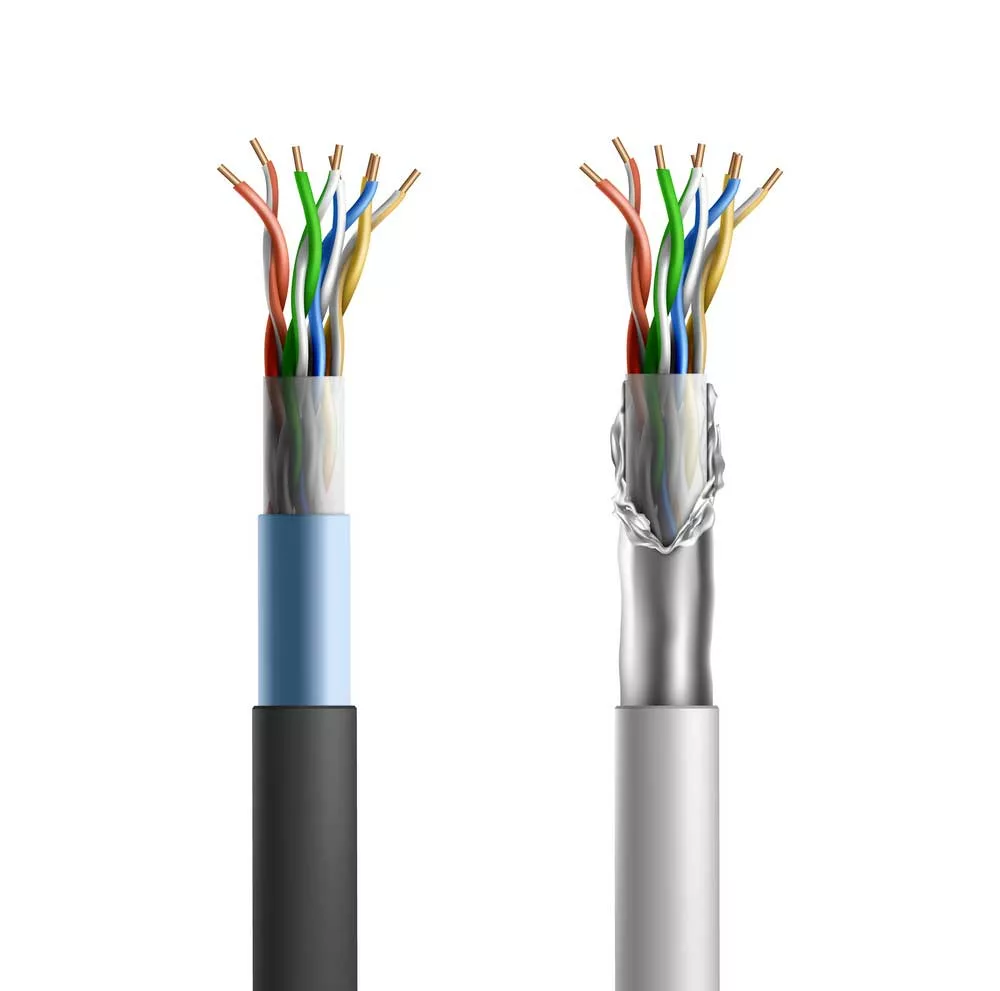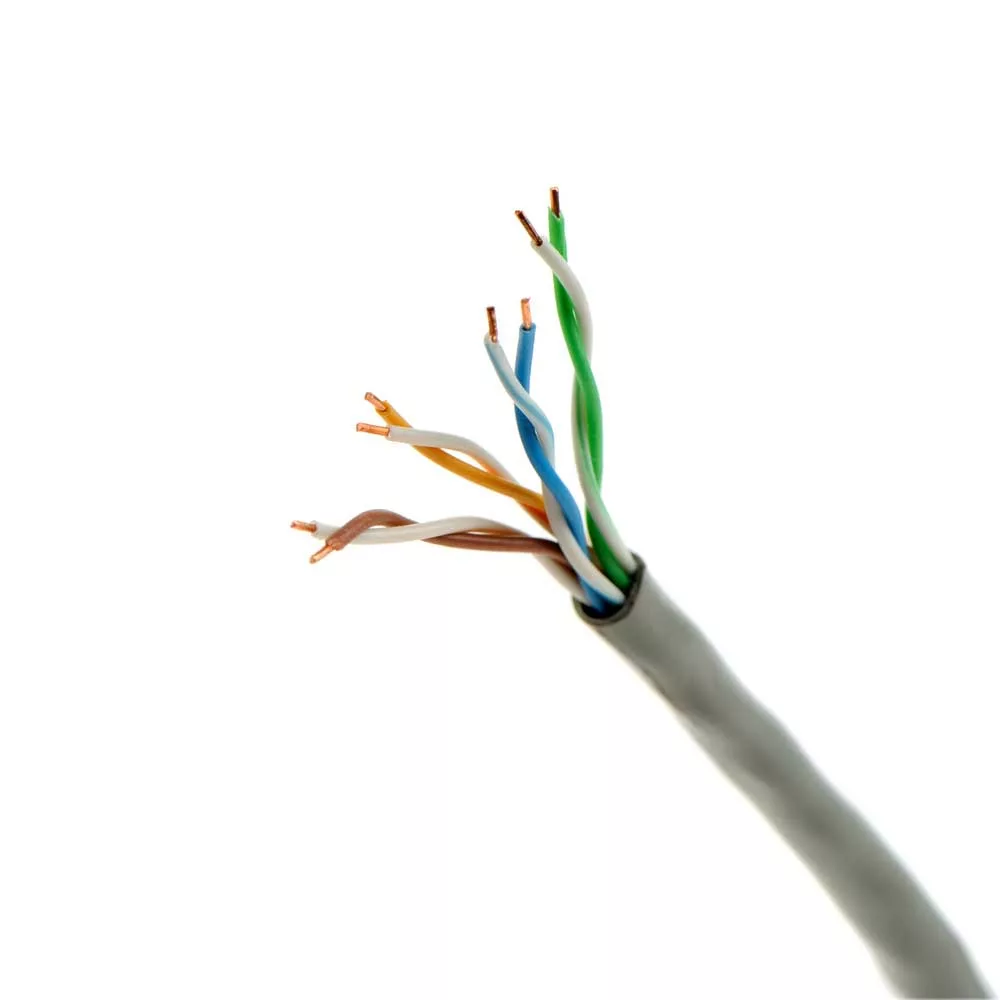Do I Need a Shielded Ethernet Cable for Home? Ethernet cables are an excellent way of accessing the internet at your home.
They ease internet connection between a WiFi router and your home computer.
And if the cables are shielded, they can withstand malfunctioning, which normally results from EMI or inferences from electrical noise.
Now you’re probably wondering, ‘Do I need a shielded ethernet cable for home?’
The article below will help answer your question by highlighting the advantages and disadvantages of shielded ethernet cables.
Table of Contents
- Shielded Ethernet Cable Vs. Unshielded Ethernet Cable
- Shielding Types @Cat Ethernet Cable Chart
- Do I Need A Shielded Ethernet Cable For Home?
- Conclusion
Shielded Ethernet Cable Vs. Unshielded Ethernet Cable
Several differences exist between shielded and unshielded caves, impacting their application.
What are shielded Ethernet Cables?
A shielded cable is one insulated with polyethylene. Normally it has four pairs of insulated wires, each encased in a conductive layer.
The shield may be from a layer of metalized foil or, in other cases, made of braided copper, aluminum, or other materials.
The additional layer makes shielded ethernet cables thicker and heavier but can protect the transmitted signal from electromagnetic radiation and electrical noise.
Braided shields offer better protection at lower frequencies and blend in better than metalized foil.
However, cables with metalized foil fixed on a polyester backing are relatively cheaper and generally flexible.

Caption: Shielded Twisted Pair
What Are Unshielded Ethernet Cables?
These are ethernet cables that don’t have shields on their surface. They’re helically wrapped and twisted together during manufacturing to prevent EMI.
Generally, these cables are considered more pliable, inexpensive, thin, and versatile and require easier installation.

Caption: Unshielded Twisted Pair
Key Differences Between Shielded Ethernet Cables and Unshielded Ethernet Cables
For one, granted, unshielded ethernet cables reduce electromagnetic induction through their twisted pairs.
But nowhere near as efficiently as shielded cables, as the added insulation increases protection.
Another difference between the two ethernet cables is their sizes, as unshielded cables appear smaller than their counterparts.
Also, they have a smaller bandwidth compared to the shielded cables. But you’re good to go if you have the unshielded type.
You can use them when installing office LANs or network cabling systems.
Further, shielded cables last longer than unshielded ethernet cables. However, they have delicate folds that can easily get damaged during installation.
Their complicated installation makes them more suited for application in areas that don’t require frequent reinstallation and replacements.
Shielding Types @Cat Ethernet Cable Chart
| Cat5 | Cat5e | Cat6 | Cat6A | Cat7 | Cat7a | Cat8 | |
| Shielding type | Unshielded or Shielded | STP or UTP | Unshielded or Shielded | UTP or STP | Shielded only | Shielded only | Shielded only |
| Standard Bandwidth | 100MHz | 100MHz | 250MHz | 500MHz | 600MHz | 1,000MHz | 2,000MHz |
| Max Data Rate | 100Mbps | 1,000Mbps (1Gbps) | 1,000Mbps (1Gbps) | 1Gbps / 10Gbps | 10Gbps / 40Gbps | 10Gbps | 25Gbps/40Gbps |
| Networks Supported | 100BASE-T | 1,000BASE-T (1GBASE-T) | 1,000BASE-T (1GBASE-T) | 1GBASE-T / 10GBASE-T | 10GBASE-T / 40GBASE-T | 10GBASE-T | 25GBASE-T / 40GBASE-T |
| Maximum Cable Length (in meters) | 100 | 100 | 100 | 100 or 50 | 100 or 50 | 100 | 30 |
| Performance Standard | ANSI/TIA | ANSI/TIA | ANSI/TIA | ANSI/TIA | ISO/IEC. | ISO/IEC. | ANSI/TIA |
| Connector Type | RJ45 | RJ45 | RJ45 | RJ45 | GG45 | GG45 | RJ45 |
| # of Connectors in Channel | 4 | 4 | 4 | 4 | 4 | 4 | 2 |
| Cost | Low | Low | Fair | Fair | Moderate | Moderate | High |
Do I Need A Shielded Ethernet Cable For Home?
The above are some of the categories of ethernet cables you can find in every ethernet connection today.
Among these, you can find Cat5, 5e, 6, and 6a shielded or unshielded, thus giving you room to choose depending on your needs.
On the other hand, you will get Cat 7, 7a, and 8 only in shielded forms. Depending on their speed differences, you will get them at different prices.
The following are some major factors you should consider when determining the best ethernet cables that meet your home needs.
Assess the Speed
Why Speed Matters
Internet speed is one of the vital factors to consider when choosing the best ethernet cable for your home needs.
It determines how quickly you can perform tasks online and how many tasks your network can handle simultaneously.
Speed is mandatory unless you’re alone or have browsing needs limited to Facebook and other basic internet needs.
You need at least a threshold speed that will allow you to accomplish your tasks without straining.
Your internet speed depends on how fast your internet connection can download or upload data normally in bits.
This speed is measured in megabits per second (Mbps), gigabits per second (Gbps) or terabytes per second (Tbps).
Meaning of Different Speeds
Now 1Mbps means 1,000,000 bits being transferred per second, and 1Gbps, 1,000,000,000 bits per second, and so on.
The higher the Mbps, Gbps, or Tbps you see, the faster the internet speed.
Remember that your chosen speed will depend on your internet needs.
It’s more common to measure internet speeds in Mbps rather than Gbps or Tbps.
That’s because many don’t require extreme Gigabitic or Terrabitic speeds.
However, a Gigabit internet is an excellent plan for a busy, smart household with gamers and work-from-home residents.
Currently, the FCC defines high-speed internet as 25Mbps, although this is fairly outdated.
See, when you apply this definition to households with more than one person, as with most, the figure is way too low.
Therefore, instead of going by the FCC’s definition of high-speed internet, it’s better to follow this rule when determining your internet needs: Simply divide the number of devices and internet usage needs in your household by the speed plan you’re considering.
A suitable result from your calculation should fall somewhere between 25 and 40 Mbps.
To illustrate, if you have a household of four persons who only use one device at a given time, a plan of 100 Mbps would be best.
Of course, the needs will be different if all four members use the internet simultaneously.
For example, if everyone uses multiple devices simultaneously, you want to consider a slightly faster plan.
Using the same analogy, if each person in a household of four uses two devices at a time, such as a smartphone and a laptop, then consider a plan of between 200 and 300 Mbps.
Now, decide on the cat according to your speed needs.
Assess the Environment
Unshielded ethernet cables have four unshielded twisted pairs of wire. Each pair is made of two twisted wires that help reduce EMI.
Normally unshielded ethernet cables will do for a small business or house unless you run them near power lines or spaces crowded with appliances.
You’re less likely to need shielded ethernet cables in such spaces due to minimal interference.
With larger businesses or more complicated environments, especially those around heavy machinery, fluorescent lights, and elevators that generate intense levels of EMI, using unshielded cables isn’t the best option.
Interference in the network will result in reduced data transmission quality and speed. Also, printers, generators, and air conditioners produce high levels of EMI.
Therefore, shielded ethernet cables are a priority in complex environments.
Assess the Cost
Cost is an important part of your budget when determining the type of internet cable to use.
On the one hand, an unshielded ethernet cable connection costs relatively lower.
Also, unshielded ethernet cables are flexible, smaller in diameter, and don’t require grounding.
Also, these cables have relatively strong protection against uncomplicated environments.
Your choice of internet speed is also a factor that determines the cost you’re willing to incur.
On the other hand, shielded cables, though relatively expensive, are known for their fast internet transmission.
Also, they’re more protected from electromagnetic interference.
However, you may have to spend more to ensure everything connected to the shielded cable is shielded and grounded.
Such accessories may include jacks, couplers, and network controllers.
Conclusion
Now you know the differences and advantages of shielded and unshielded ethernet cables and whether or not you need a shielded cable for your home internet.
And with the tips outlined above, you can now make a more informed decision about the most appropriate voice for your internet needs.
For all your ethernet cable needs, feel free to contact Cloom Tech.
